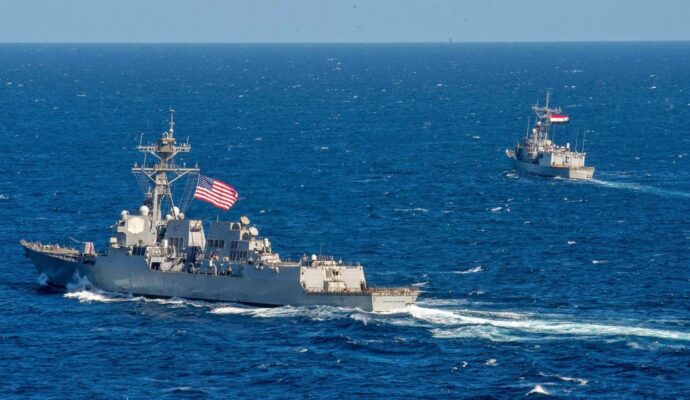Yohanes Sulaiman, an associate professor of international relations at the Jenderal Achmad Yani University in Indonesia, said Beijing had much to lose from its assertion in the longer term, and that as countries in the region grew stronger economically and militarily they would “remember this humiliation”.
“China basically won’t be able to buy these countries’ hearts and minds. And in the case of a conflict between China and the US, they will be far more likely to side with the US,” Sulaiman said.
Advertisement
“By doing this, China is damaging its long-term influence … hurting its own interests and this will badly backfire for China in the future.”
Renato Cruz De Castro, a professor of international studies at De La Salle University, said the string of government statements issued over China’s new map indicated a “very strong pushback” in the region.
He noted that Malaysia – which has a policy of “quiet diplomacy” – was the first of the Southeast Asian maritime nations to speak out.
“Malaysia’s reaction is, in a way, a litmus test of how far Asean countries could tolerate China’s behaviour in the South China Sea,” he said, referring to the Association of Southeast Asian Nations.
Why is a rusty old Philippine warship involved in the South China Sea dispute?
Why is a rusty old Philippine warship involved in the South China Sea dispute?
Apart from Beijing’s latest map – with its claims marked out in a new 10-dash line that includes self-ruled Taiwan – tensions in the region have also been stoked by recent clashes between China and the Philippines.
Advertisement
Last month, Chinese coastguard ships intercepted and fired water cannon to warn off a Philippine vessel that was on a resupply mission to the Second Thomas Shoal in the contested Spratly Islands.
Cruz De Castro called the developments a “warning” to the region and said they reinforced the view that “the Chinese will say one thing and do another”.
Advertisement
For its part, Beijing has always stressed that it has “indisputable sovereignty” over the South China Sea, and that maritime disputes should be resolved through dialogue and consultation.
Prashanth Parameswaran, a fellow with the Wilson Centre’s Asia programme, wrote in a newsletter on Monday that the “rare series of quick coordinated statements” in response to the map was a “critical component of blunting Beijing’s efforts to legitimise its claims”.
“Policymakers know that silence on actions like new maps only plays into China’s hope that its growing capabilities and assertive moves will create a numbing effect such that it eventually achieves effective control of the South China Sea.”
Advertisement
He said the release of the map days before the Asean talks, “all but assures that the South China Sea will be potentially even more of a key issue”.
Sarah Teo, an assistant professor at the S. Rajaratnam School of International Studies, said Asean leaders were likely to raise their concerns when they met Li.
Advertisement
She did not expect a significant change in regional dynamics in the short term. “In the longer term, however, China’s approach may incrementally lead to a sustained shift in its relations with some Southeast Asian countries,” she said.
Dylan Loh, an assistant professor of foreign policy at Nanyang Technological University, also expected the South China Sea to feature prominently in the Asean talks.
He said “the manner, way and medium through which” Beijing expressed its claims had given the region “further cause for concern”.
Indonesia’s South China Sea remarks show a ‘level up’ of support for claimants
Indonesia’s South China Sea remarks show a ‘level up’ of support for claimants
Most observers agreed direct confrontation with China would be avoided because of trade ties.
But Cruz De Castro said some countries would “not be that polite any more” when it came to the South China Sea – though Beijing was likely to dismiss them.
“China couldn’t care less about how small countries in Southeast Asia react because China’s goal is basically to send a message,” he said. “China will behave like a great power. It will [do what is] necessary to achieve what it believes is in its national interests.”
He said recent developments reinforced the view that China was using the long-delayed South China Sea code of conduct – being negotiated between Beijing and Southeast Asian nations – “for its diplomatic and strategic convenience”.
Sulaiman from the university in Indonesia said Southeast Asian countries had meanwhile been modernising their militaries, buying arms and signing deals with Western powers.
He said China’s behaviour would push countries towards the West, citing polls showing that countries in the region increasingly had more trust in Washington than Beijing.
According to Cruz De Castro, while regional governments would continue “the charade” with China, they had begun a “hard balancing approach” and were moving closer to the US and its allies including Japan and Australia.
Advertisement



